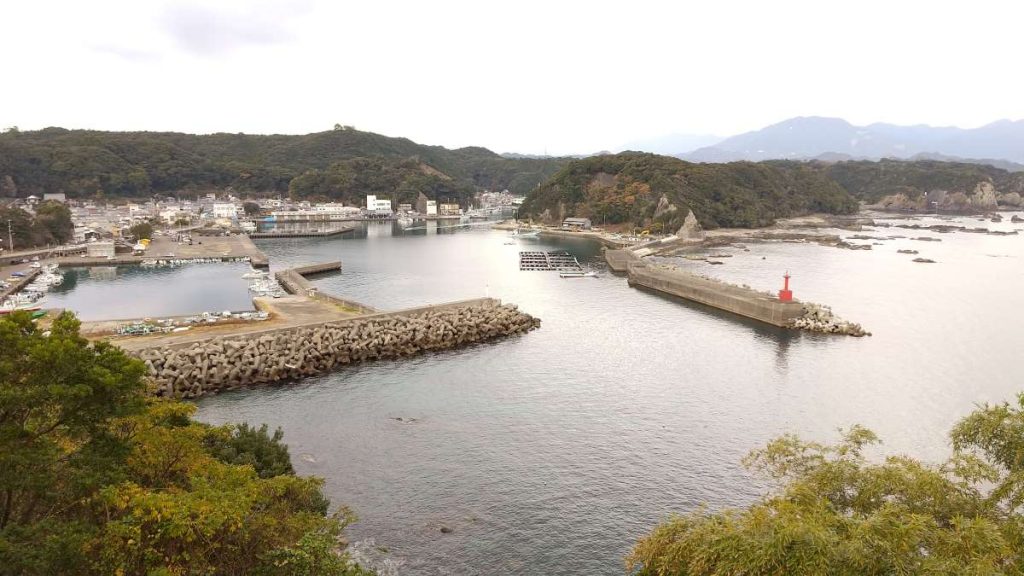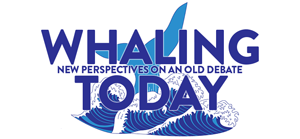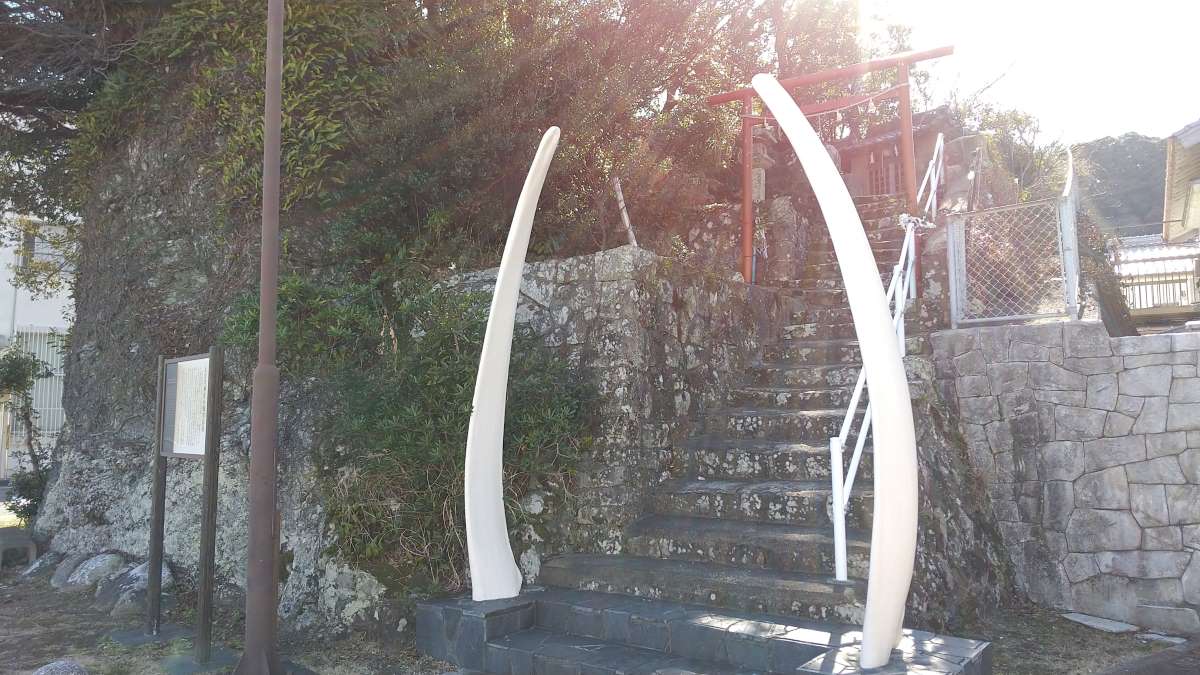First in a series of five articles
The Japanese have been hunting whales since ancient times. It is impossible to consider the relationship between the Japanese people and the sea without examining the history of whaling.
This is the first of a series of five articles on “Whales in the Japanese Landscape.” The series is part of a larger ongoing collection published by the Sankei Shimbun in Japanese, titled “Tales of the Watatsumi” after the Japanese god of the sea.
Traditional whaling, which prospered during Japan’s Edo Period, was both a large industry that commercialized one of the ocean’s great resources, and a unique culture.
What did whales mean to the Japanese, and to the human race? The author set out to investigate and unravel our relationship with whaling.
Just off of Taiji Harbor in Wakayama Prefecture, two large whale bones nearly twice my height stand at the entrance of Ebisu Shrine. The “whale bone torii” (a torii is a gateway to a Shinto shrine), is made from the jawbones of a sei whale.
When I saw it I thought it was part of an old religious tradition to honor whaling, but it turns out to be quite recent. The torii was first created in 1985, and the one that stands there now is the third generation.
Story Behind the Torii
The Edo-Period poet and author Ihara Saikaku, who was based in Osaka, wrote about the torii in a story in his book The Japanese Family Storehouse (Kadokawa Gakugei Publisher, 2009 edition, in Japanese):
It stands some 30 feet high, and if you are curious about it you should ask a local resident…
The story depicts a traveler to Taiji, apparently Ihara himself, who is surprised at the odd site of the giant bones. “The Japanese Family Storehouse” interweaves fact and fiction in tales about monetary successes and failures, in what would today be called a financial novel. There is no proof that such a torii existed in Taiji, and it is believed to be a fictional device to capture the attention of readers.
The Story of the Taiji Torii
Ihara, who writes as though relating a spoken conversation, introduces a local whaler known as “Demon” Gennai. Once a common whaler, Gennai came up with the idea of crushing whale bones to create oil. He also invents the whale net, which ensnares the animals and eliminates failed hunts, and builds up a vast fortune.
When the oil was extracted, it was more than a thousand barrels could hold, and no part of the flesh, or skin, or fins was thrown away, so that a single whale could make a man wealthy.
Whales were stores of resources that swam slowly through the sea. Once brought up onto land, their massive bodies were divided and put to use until there was nothing left.
They produced a wide variety of products. In addition to meat for human consumption, their oil was used for lamps and pesticides, and their baleen for springs in traditional musical dolls. It was said that “a single whale brings prosperity to seven villages.”
Ihara evoked colorful examples in his descriptions of the various piles of whale meat.
The sliced and stacked meat and blubber was a rare spectacle in that mountainless village, bringing [to mind] the white snowy peaks of Mt. Fuji and the red autumn leaves of Mt. Takao.
Blood as Fertilizer – A Bounty of Resources
‘Demon’ Gennai was based on fact. In 1677, a new style of whaling was invented by Yoriharu, the first of the Taiji Kakuemon family.
His method used nets to entrap the animals, in addition to the traditional method which relied on hand-thrown harpoons. This sharply increased the capture rate and his family’s business greatly expanded.
Yoriharu was originally part of the Wada family line, but due to his success was allowed to branch off into a new Taiji line. The Kakuemon family was so successful that it was featured in a list of the richest families of Japan published in 1836.

Whaling in Taiji
Traditional whaling in Taiji was originally started by the grandfather of Yoriharu, Wada Chube Yorimoto. Across the Edo and Meiji Periods, whaling was carried out by the Wada and Taiji families.
One descendant of the family, Taiji Gorosaku, who served in posts such as the mayor of the neighboring town of Katsuura, gave a talk in 1935 outlining the details of traditional whaling. The written record of this talk makes it clear that traditional whaling was a highly organized, industrial activity.
The whaling organization included a business division that dealt with issues such as planning, raising capital, and computing wages. And it employed hundreds of fishermen.
It had specialized divisions, including carpenters that maintained whaling boats and tools, and blacksmiths that were responsible for producing harpoons and other metal items. Whale meat was preserved with salt, while the skin was boiled in large pots to extract oil.
The products were sent to Osaka and Nagoya by boat. It is said that not a single part of the whale was wasted, with even the blood used as fertilizer.
The Foundation of Capitalism
Both Yorimoto, who developed the local whaling organization, and Yoriharu, who greatly expanded it with his new hunting method, were more industrialists than fishermen. As Japan transitioned from the “Sengoku” (Warring States) Period to the more stable Edo Period, these men relied on their own resourcefulness to create and greatly expand a new industry.
Most fish are brought ashore and sold in the same form as when they are caught, but with whaling this is impossible. In addition to securing markets to sell their products, these men had to establish processes to create their products from natural resources.
Shinichi Nakazawa, an anthropology scholar and professor at the Kyoto University Kokoro Research Center, has described the significance of traditional whaling in this way:
Japanese manufacturing was born in Taiji, then shifted to other areas such as the textile industry in the Kyoto region. You could say that it is the foundation of Japanese capitalism and the source of the country’s manufacturing.
Saikaku (the Edo author who wrote about Taiji) focused on this process of extracting the bounties of the sea and transforming them into wealth, and praised the resourcefulness it required.
“My son catches whales, you know”
During the Edo Period, Taiji was located on the sea lane that connected Osaka and Edo (modern Tokyo), and the local cape had a lighthouse that burned whale oil. The town retains the strong character of its whaling history.
As Hayato Sakurai, a curator at the Taiji Historical Archives, points out, there were aspects of whaling that Saikaku didn’t focus on: “There was a large support structure, which did things like keep the whalers employed even when the catches were low.”
In recent years, whaling has continued in different forms, and has become both a tradition and a way of life.
Taiji is the smallest town in Wakayama Prefecture, with an area of just six square kilometers (2.3 square miles). In the Showa and Heisei Periods, when the Japanese government pressured many small towns to merge, Taiji resisted the trend and remained independent. There is no question that this decision was based on the town’s strong bonds, centered around its whaling identity.
When I went to visit the whale bone torii, an elderly woman approached me. “My son catches whales, you know.”
It is clear that Taiji’s whaling pride is still alive today.
(Read the column in Japanese at this link. This article is published in cooperation with the Institute of Cetacean Research. Let us hear your thoughts in our comments section.)
Series continues in Part 2.
RELATED: In Chiba Prefecture’s Minamiboso, Fighting to Save Coastal Whaling Traditions
Author: Hideaki Sakamoto
Hideaki Sakamoto is a member of the Sankei Newspaper’s Osaka editorial committee for the local news division.This series aims to experiment with new approaches in examining the spiritual history of Japanese that interact with the sea.

